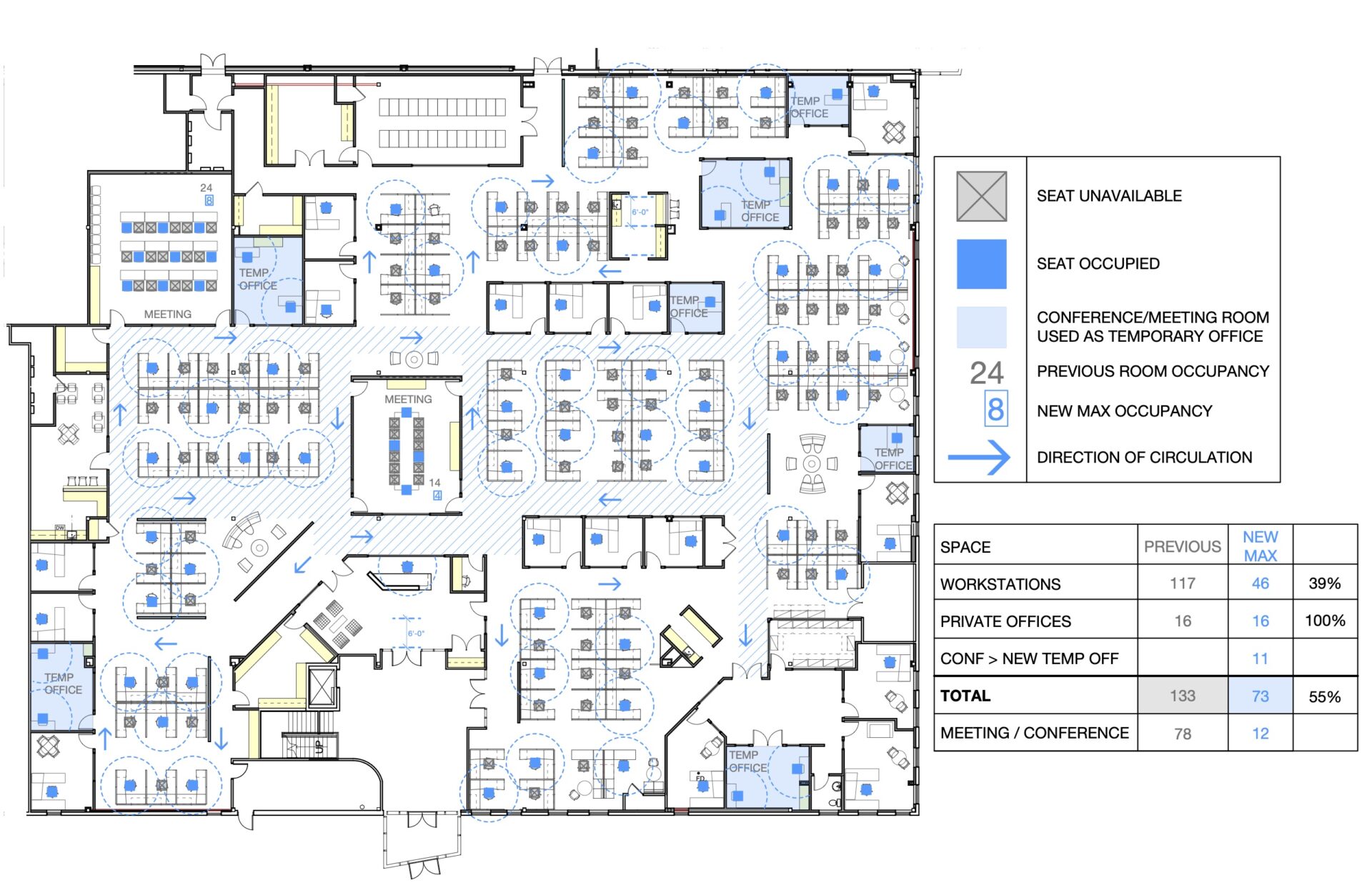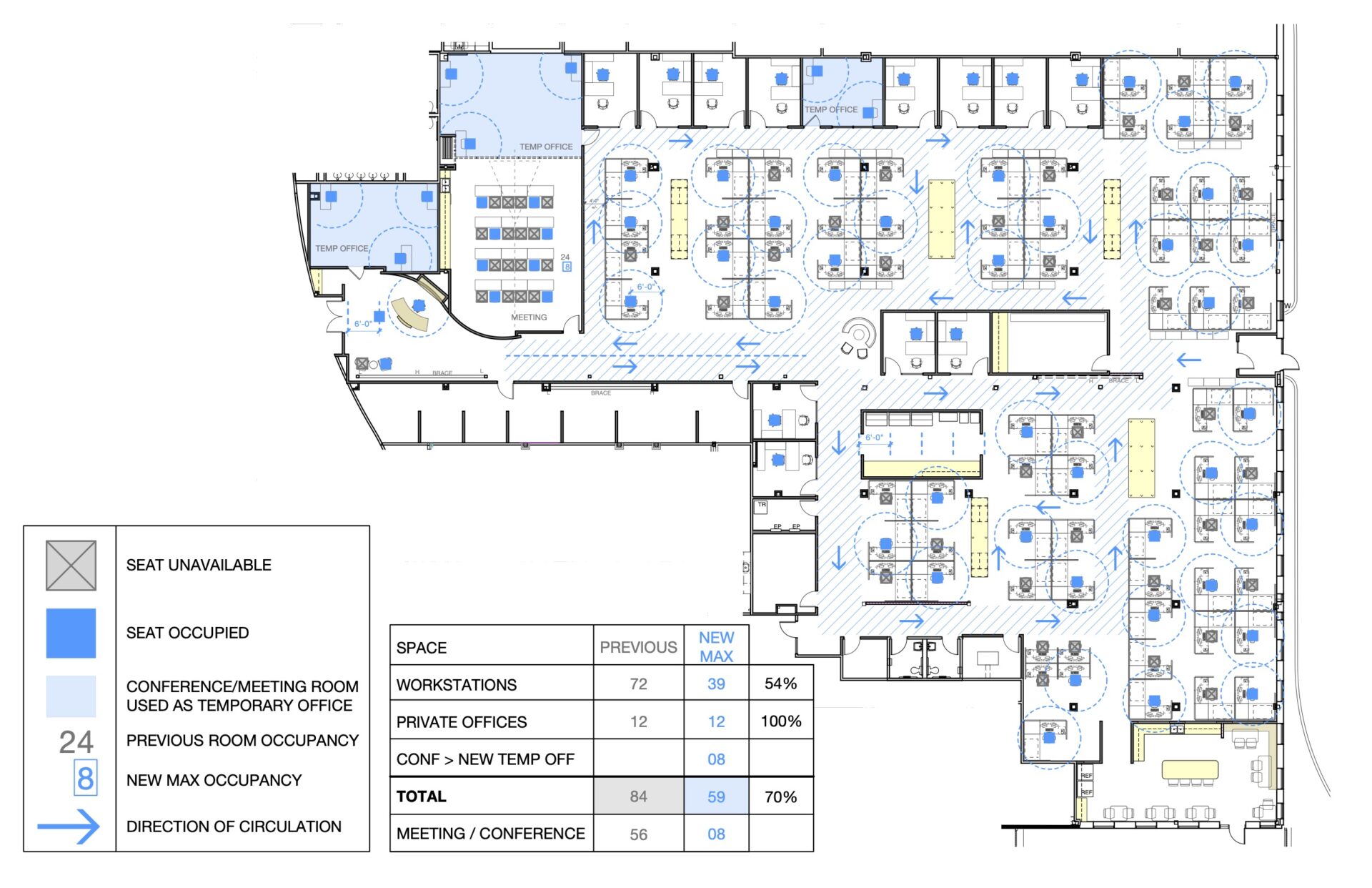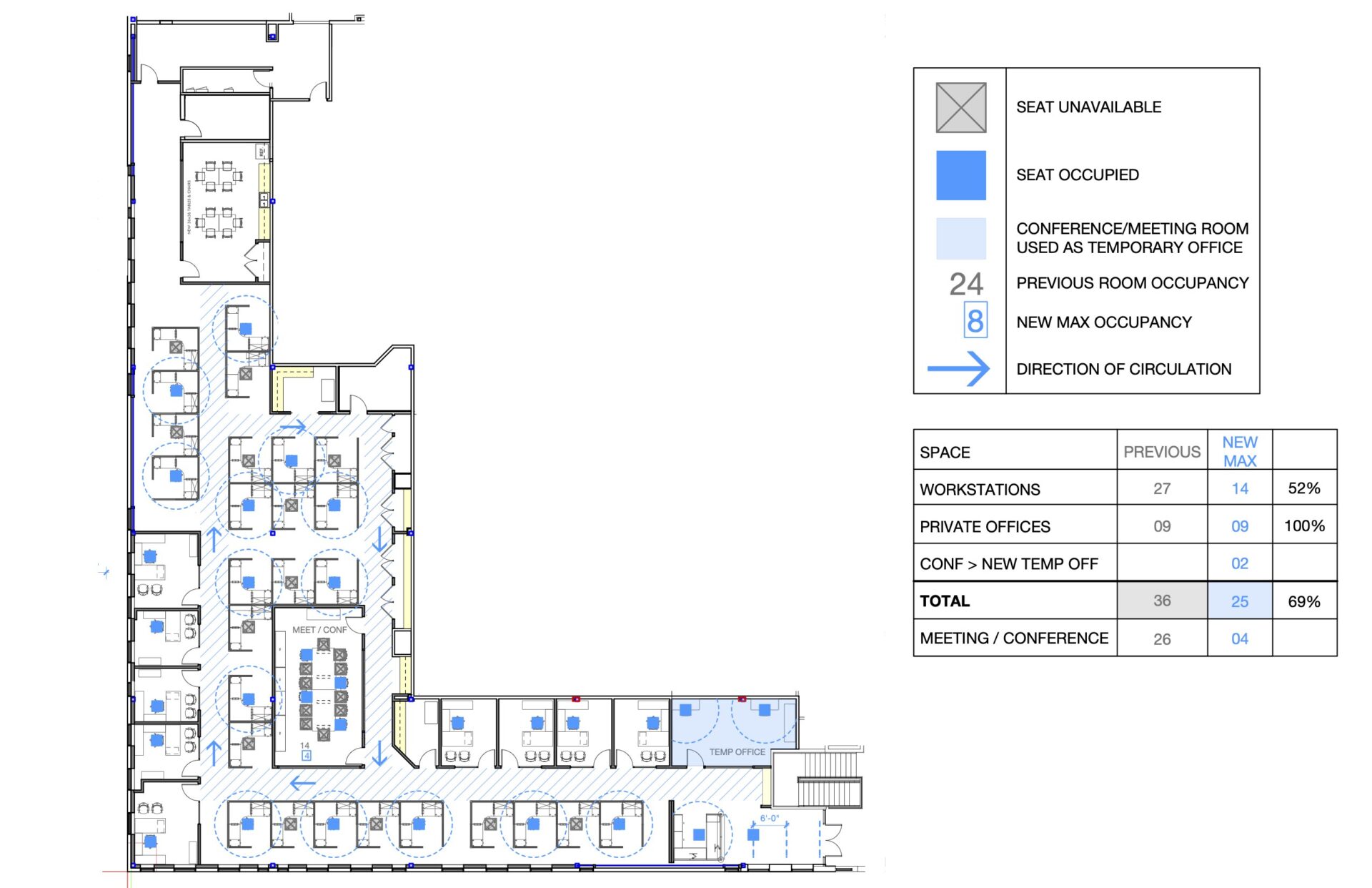Along with all the startling changes brought by the pandemic, re-occupying the office with defensive measures is now among them as authorities try and devise and deploy best practices.
From what we can tell – sorting through peer posts, virtual roundtables, government guidelines, and updates – they are evolving.
Massachusetts announced new guidelines and checklists for Safety Standards for Office Spaces this week (Monday, May 18th), with offices re-occupying at 25% prior capacity on May 25th. Boston is delayed until June 1st; on the Safety Standards page, download “Office Spaces Protocol Summary” and “Office Spaces Checklist.” (Note: all the examples shown here look at occupancies of 50% or higher, once regulations allow. These exercises illustrate the unique challenges individual office configurations will present regarding existing aisle widths, workstation sizes, and panel heights, etc.)
On Wednesday, May 14th, there was news of an easier and non-invasive saliva test that could be rolled out quickly, making COVID testing much more agreeable than being subjected to the invasive nasopharyngeal swab.
Rapid improvements in diagnosis and treatments will rapidly change the landscape of the public and common places.

As we learn more about the virus and it’s spread, we are learning more from advisories about returning to professional work in commercial office space and what a new-normal day will look like there.
We’ll continue to do so.
Disruptive economic changes tend to produce radical changes in perception. Immediate changes in views on a remote workforce have reversed by necessity, but we also think that claims, such as “The office is dead,” are good headlines, but are likely premature as public health and economic conditions shift over the next year.
If resources were no concern, furniture could be reconfigured, Plexiglas guards installed, HVAC systems could be refit to minimize risks of virus spread.
Resources, of course, are among the prime concerns for users and owners alike during times like these.
So, what might the near-term, feasible adaptations look like as the first phase of the virus plateaus and authorities decide a next-phase remobilization of the workforce? (The AIA has a very comprehensive “re-occupancy” checklist here.)
- Doctor’s Orders: Any immediate steps should begin with disinfecting the workplace per CDC and other authority recommendations in mind. The psychology of remobilizing an office workforce begins with confidence that risks are minimized to the greatest extent possible. One tip that makes great sense to us is to clear off all desk clutter throughout the office so all surfaces can be disinfected easily and often. Multiple hand sanitizer dispensing locations should be the plan of any new restart.
- Remote is the new black: There is no safer contact than no contact. Perhaps the one upside of the virus has shown that the productivity drops assumed from a remote, online workforce have not been crippling. In fact, many companies are extending remote work through the year. The health and wellness benefits of eliminating commutes are obvious. With that in mind, when a project can thrive remotely, it should. Teams also thrive socially, so ongoing online socializing should be kept in place (Helicon has a weekly “Show & Tell” hour which takes a look at co-workers’ avocations).
- Workshare: No one envisions 100% of the office workforce returning immediately. Most companies are planning for some kind of plan with alternating teams in the office each week with, perhaps, half-week in-office schedules being the most practical. Some are taking Wednesdays to disinfect offices as best as possible, with Team A coming in for Mondays and Tuesdays, and Team B coming for Thursdays and Fridays. This immediately cuts the office population in half.
- Main Building entries and lobbies: One study showed virus transmission spread primarily from the main push-plate of one office suite entry. So, elevator buttons, and especially common area bathrooms, are of critical concern. We see these as Owner territory, and protocols should be in place. (We saw one ingenious Styrofoam-toothpick “porcupine” for an elevator button solution.) Tenants should be closing entries and exits not needed for egress compliance. Deliveries should be left outside suite entries for now.
- One-way streets now inside: Many are now following retail protocols inside the office with clockwise directional floor arrows (top) indicating one-way circulation around the office. This simplifies estimating and keeping six feet of distance with everyone going in the same direction.
- The 6-foot Office: There are a few very interesting graphical representations on how to keep people separated six feet while in cubicles and conference rooms. Elaborate new floor mats, new workstations, etc., will not be practical for most, but some temporary floor markings will work. The easiest fix, of course, is to eliminate every other workstation seat. That is not practical if those employees are to be phased in early in the return. Alternating work-share is probably a better strategy for the coming months.
- Remote On Location: Helicon uses Google chat for general remote needs, but is also planning on sharing documents in chat within the office. You won’t be able to look over someone’s shoulder at their screen for a while.
- Common Rooms: Close them, if you don’t need them. If storage is available, conference chairs can be taken away to leave conference table seating spaced six feet apart. Most will want to stay out of the break rooms and refrigerators anyway, but it’s a good idea to remove seating or cordon them off.
Office managers will have these and many more challenges ahead. Effects of public transportation, lunchtime protocols, households with family illnesses will all impact the daily life of a professional office as we once knew it.
Knowledge will be the most powerful tool in the fight as we all attempt to get back to business.


